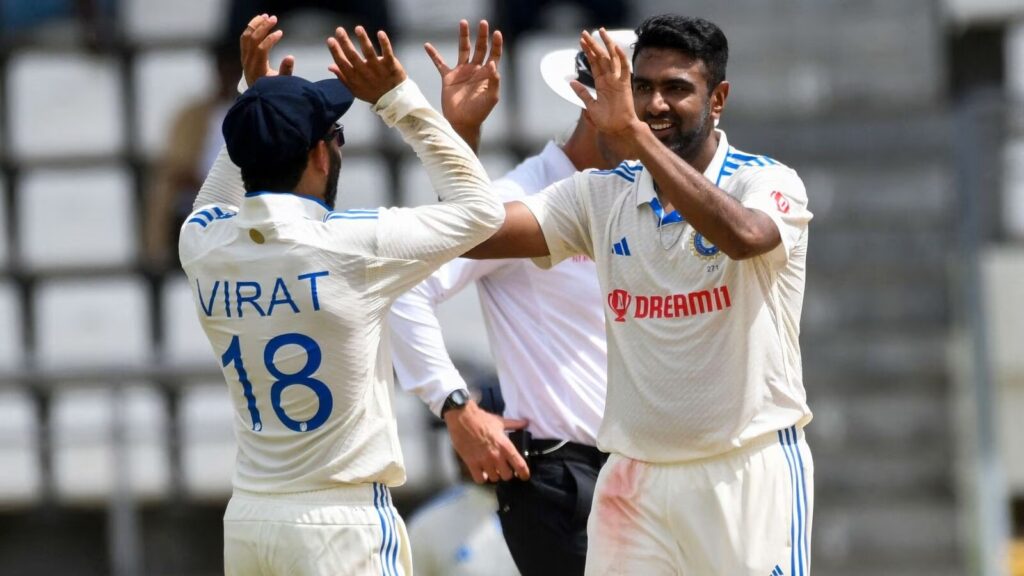Nearly 40 years ago, West Indies arrived in India months after losing an important global final in London. They came with a team weakened by the absence of the great Joel Garner, and with Andy Roberts on the last lap of a great career – he would play only two of the six Tests. They won 3-0, with Malcolm Marshall taking 33 wickets in the series, and Michael Holding 30.
It’s difficult for modern-day cricket fans to even fathom just how good that West Indies side was. The numbers give you a clue. In the 1980s, they won 43 and lost just eight of the 82 Tests they played. The win-loss record at home was a scarcely believable 18-1, while 25 wins and seven losses away suggested that it didn’t matter what conditions they encountered.
To put that into perspective, India have played their finest Test cricket in the last decade, with 53 wins and 27 losses from 98 matches. The home record is an incredible 32-3, comparable to the best teams in history. But away from India, there have been 24 losses and just 21 wins. What this Indian vintage do have in common with the West Indians of yore, however, is a bowling group that always seems to find solutions to problems posed.
Spin has never been as glamourous as raw, frightening pace. And it’s no secret that spinners struggle on green-tinged pitches in England, South Africa and New Zealand, where they often do little more than speed up the over-rate while the seamers take a breather. Even on surfaces not so loaded in favour of the pace bowlers, you seldom expect spinners to come into play as early as the first morning.
But that was exactly what R Ashwin and Ravindra Jadeja did in Dominica. By lunch, West Indies were well and truly on the rack at 68 for 4. The fact that the longest partnership of the innings – between Alick Athanaze and Jason Holder – spanned just 108 balls tells you just how much pressure West Indies were put under.
Also Read: Rohit-Jaiswal Make Solid Start After Ashwin Five-For Skittles WI for 150
The impact of Ashwin can’t be measured by wickets alone, though 5-60 is a superb return for a spinner on the first day of a Test. The uncharacteristic hoick from the normally unflappable Kraigg Brathwaite was an example of how much Ashwin gets into batters’ heads. In an effort to prevent him from settling into a groove, Brathwaite played a low-percentage shot and paid the price.
Remember too that this is an Indian attack where Mohammed Siraj is the only pacer with significant international experience. Mohammed Shami has been rested, and Umesh Yadav has likely been sidelined for good, just as Ishant Sharma was nearly two years ago. Jasprit Bumrah probably won’t be fit to play a Test for the foreseeable future.
The transition debate has always centered on India’s batting – no surprise in a country obsessed with hundreds – but this is a period of churning for the bowling unit as well. Even Siraj has only been a regular for a couple of seasons, and that makes the roles of Ashwin and Jadeja all the more important.
What we saw on day one in Dominica was not Marshall Law in Kanpur – the Bajan pace ace reduced India to 18 for 4 in a scary burst in the first Test of that 1983 series – but it was an example of how India’s spin twins keep coming up trumps when the captain needs them. They won’t be able to influence every Test away from home, but the fact that India are actually competitive each time they travel is testament to the control and skill that they offer.
The comparisons with 1983 end there though. India may have been beaten in that series, but they still had two batsmen – Sunil Gavaskar and Dilip Vengsarkar – who scored two centuries apiece and averaged over 50. This West Indies team don’t seem remotely capable of such heroics. Athanaze showed glimpses of ability and sound temperament, but there was precious little else to cling to on a grim day for the hosts.
If India are a Test force now, much of the credit goes to the likes of Virat Kohli, Rohit Sharma and Ashwin, and the importance they have always given to the Test format. Unless your leading players value the five-day game, you can’t really expect the youngsters coming through to care. If a Test cap matters to Yashasvi Jaiswal, it’s partly because of the example set by Kohli and others. Sadly, West Indies cricket, in recent times, has had more cautionary tales than role models.
Also Read: Stellar Ashwin Show Bring Oval Decision Back into Focus




